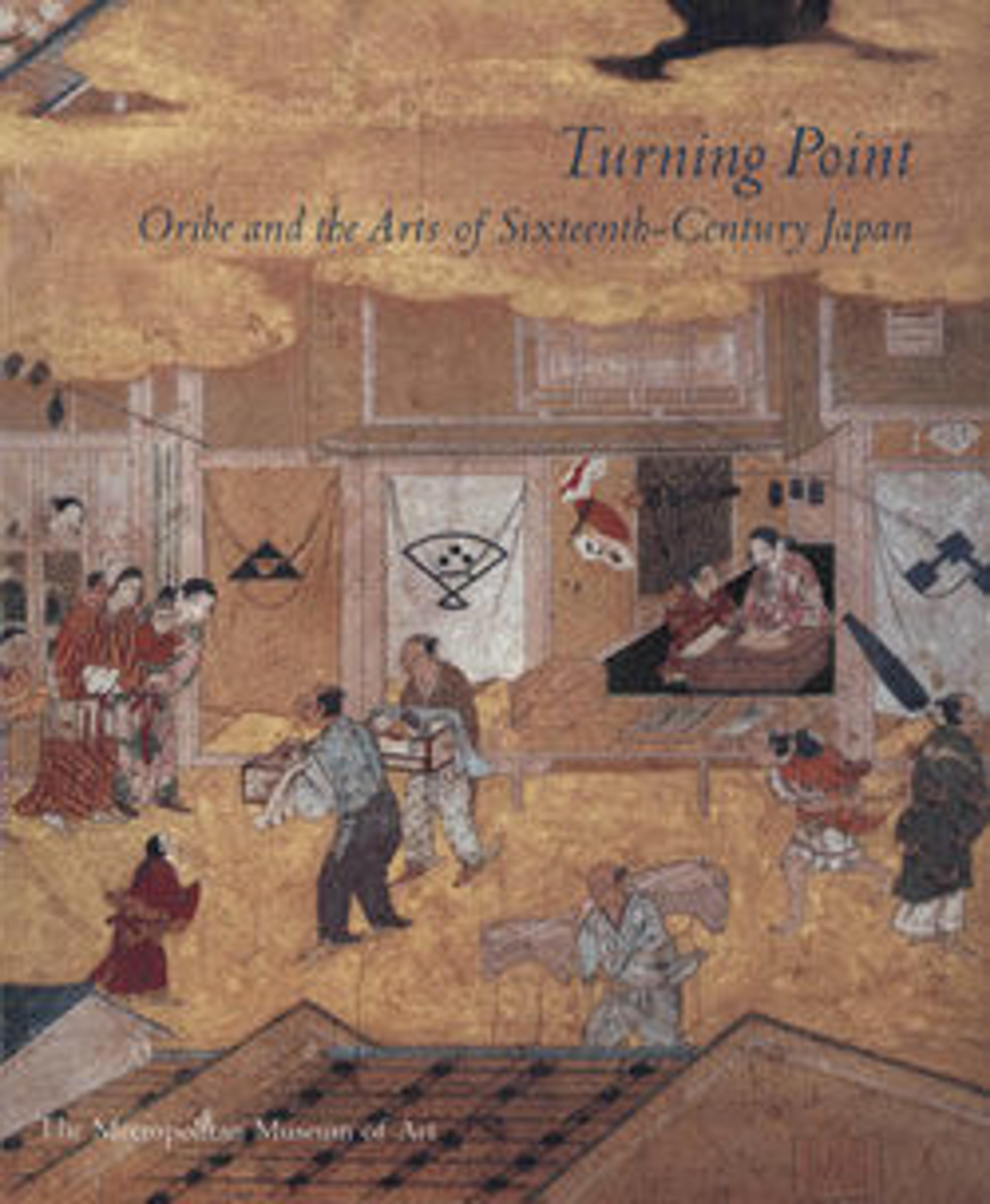Tsujigahana Textile with Horizontal Stripes, Flowering Plants, Fans, Snowflakes, Clouds, and Bellflowers
Probably once part of the back of a kosode (predecessor of the modern kimono), this tsujigahana textile panel has four ornamented horizontal bands that alternate in brown and white. The term tsujigahana, translated literally as “flowers (hana) at the crossroads (tsuji),” evokes images of delicate blossoms amid pathways. While these motifs survive in textile fragments, the precise meaning of tsujigahana remains unclear. Late Muromachi (1392–1573)- and Momoyama-period written sources used the word in descriptions of garments, but twentieth-century scholars redefined it as a textile technique: stitch-resist dyeing and ink painting on a lightweight, plain-weave ground, often further embellished with gold-leaf imprinting and embroidery.
Artwork Details
- 縞平絹地草花扇面雪輪雲模様辻が花 裂
- Title: Tsujigahana Textile with Horizontal Stripes, Flowering Plants, Fans, Snowflakes, Clouds, and Bellflowers
- Period: Momoyama period (1573–1615)
- Date: ca. late 16th century
- Culture: Japan
- Medium: Plain-weave silk with resist dyeing and ink painting
- Dimensions: 24 3/16 x 15 1/2 in. (61.4 x 39.3 cm)
- Classification: Textiles-Painted and Dyed
- Credit Line: Purchase, Parnassus Foundation/Jane and Raphael Bernstein Gift, and Friends of Asian Art Gifts, 2002
- Object Number: 2002.256
- Curatorial Department: Asian Art
More Artwork
Research Resources
The Met provides unparalleled resources for research and welcomes an international community of students and scholars. The Met's Open Access API is where creators and researchers can connect to the The Met collection. Open Access data and public domain images are available for unrestricted commercial and noncommercial use without permission or fee.
To request images under copyright and other restrictions, please use this Image Request form.
Feedback
We continue to research and examine historical and cultural context for objects in The Met collection. If you have comments or questions about this object record, please contact us using the form below. The Museum looks forward to receiving your comments.
